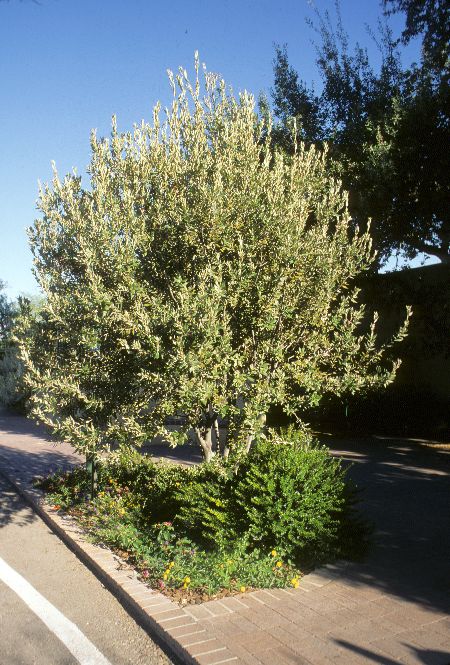
Quercus ilex
Holly Oak
Holly Oak can be grown as a tree or shrub, and actually makes a nice screen or hedge when planted close together. Canopy coverage: 1,963 square feet.
[Read More]Quercus turbinella
Desert Scrub Oak
Can be grown as a tree form, but more often serves as a shrub in tough conditions. Sharp-tipped leaves are evergreen but drop in spring as new leaves replace them. Canopy coverage: 28 square feet.
[Read More]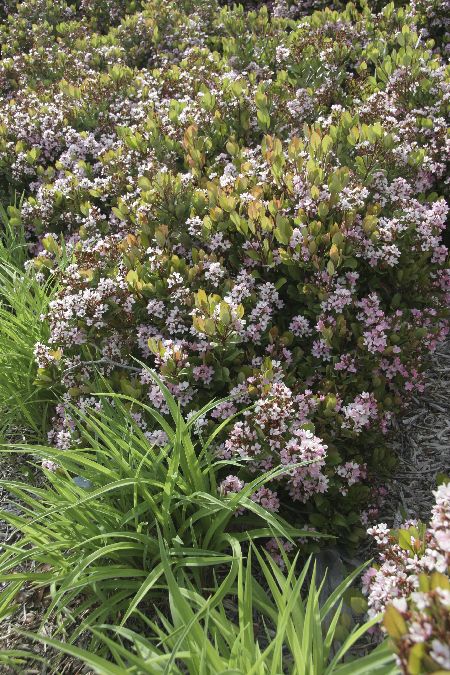
Rhaphiolepis indica
Indian Hawthorn
Glossy, leathery leaves are an attraction. Best with some protection from the sun in hot summer regions. Check your local nursery for improved selections that offer different flower colors such as 'Jack Evans', bright pink flowers; and 'Clara', white flowers. Canopy coverage: 28 square feet.
[Read More]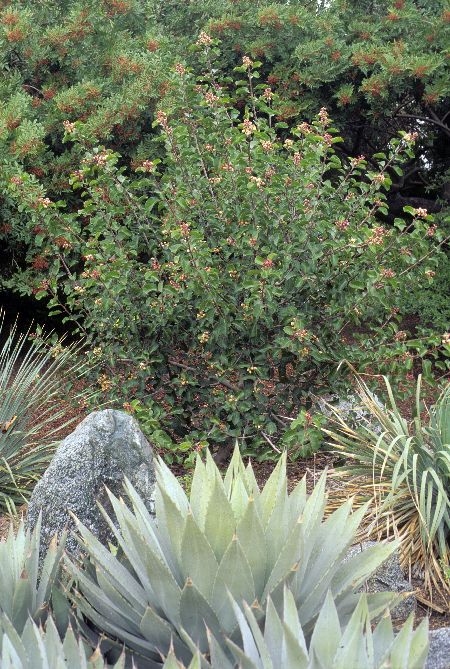
Rhus ovata
Sugar Bush
The dense, rounded form of Sugar Bush is excellent as a screen or hedge. Flowers emerge as red buds then become flowers that bloom in cream-colored clusters. Canopy coverage: 79 square feet.
[Read More]Rhus virens
Evergreen Sumac
Evergreen Sumac is accepting of shade, ideal for beneath canopy trees. Small, berrylike fruit follow spring flowers. Canopy coverage: 64 square feet.
[Read More]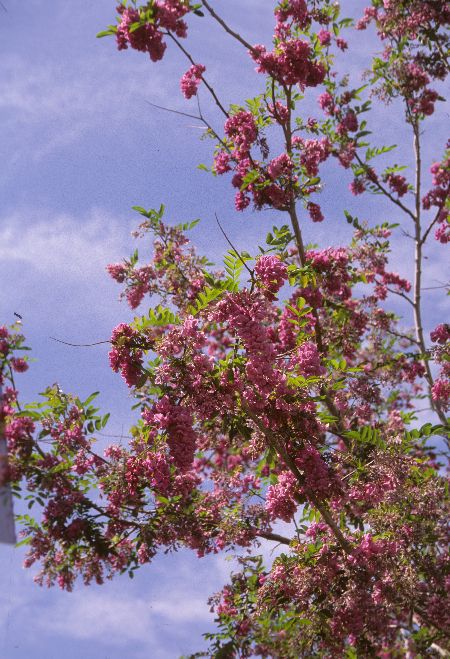
Robinia pseudoacacia
Black Locust
Black Locust has an open, branching form. Requires pruning-training when young to develop into an appealing flowering tree. Canopy coverage: 2,827 square feet.
[Read More]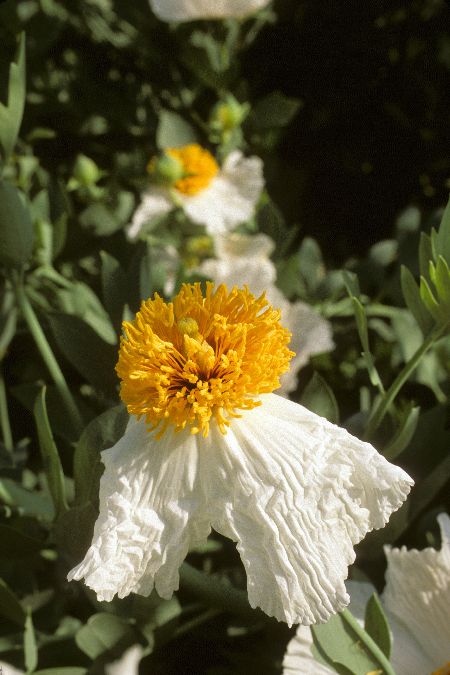
Romneya coulteri
Matilija Poppy
Grown for its spectacular, crepe paper flowers up to 9 inches across. They are pure white with a yellow center, thus one of its common names Fried Egg Plant. Best for an informal, naturalistic landscape. Canopy coverage: 28 square feet.
[Read More]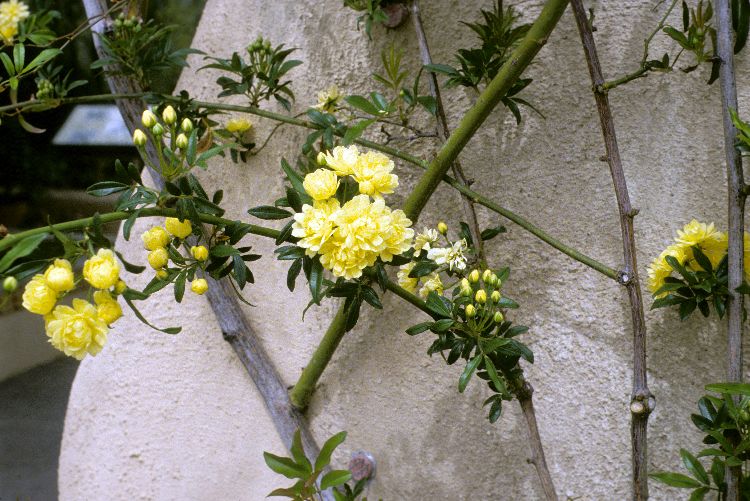
Rosa banksiae
Lady Banks' Rose
Lady Bank's Rose is a sprawling Rose that has no thorns and requires little maintenance. Plants can grow quite large with time. 'Lutea' features pale yellow flowers; 'Alba Plena' has white flowers. Canopy coverage: 491 square feet.
[Read More]Rosa foetida bicolor
Austrian Copper Rose
Austrian Copper is an old garden rose that makes an excellent flowering shrub and security screen. Prickly branches grow in an upright and arching form. Susceptible to blackspot disease. Canopy coverage: 20 square feet.
[Read More]Rosa foetida persiana
Persian Yellow Rose
Persian Yellow is an old garden rose introduced in the 1830s that makes an excellent flowering shrub and security screen. Blooms once a year but profuse in late spring to early summer. Flowers are lightly fragrant. Canopy coverage: 28 square feet.
[Read More]Rosa glauca
Shrub Rose
An Old Garden Rose that serves as a large shrub in the landscape. Interesting foliage in shades of gray-green and purple exist on the canes at the same time. Flowers are small but a striking deep pink color and have a slight fragrance. Large orange-red hips, the seed capsules of Roses, follow flowers and are ornamental as they remain on plant into winter. Canopy coverage: 20 square feet.
[Read More]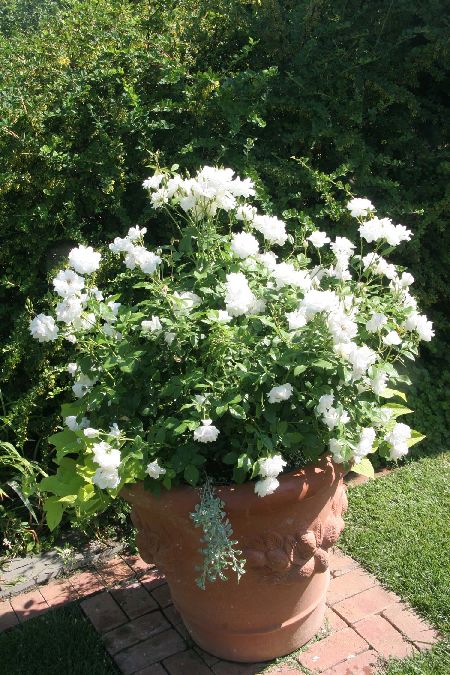
Rosa species
Shrub Rose
There are of course numerous Rose varieties available in every size, flower color and fragrance. Floribunda forms are common Shrub Roses. Also consider David Austin landscape Roses, as well as Old Garden Roses. Photos: red rose hips; 'Iceberg' in container; hot pink 'Old Blush'; white 'Sally Holmes' in landscape and miniature 'Poker Chip'. Canopy coverage: 28 square feet.
[Read More]Rosmarinus officinalis
Rosemary
Rosemary is a desirable shrub for its ability to accept tough conditions, featuring fragrant foliage valued for culinary use. Groundcover forms such as 'Prostrata' are wide-spreading. It is an excellent choice for draping and trailing over the edges of walls and containers. Canopy coverage: 13 square feet.
[Read More]Ruellia brittoniana
Ruellia
Profuse purple, trumpet-shaped flowers bloom during the warm season. Prefers afternoon shade in hot-summer regions. Canopy coverage: 13 square feet.
[Read More]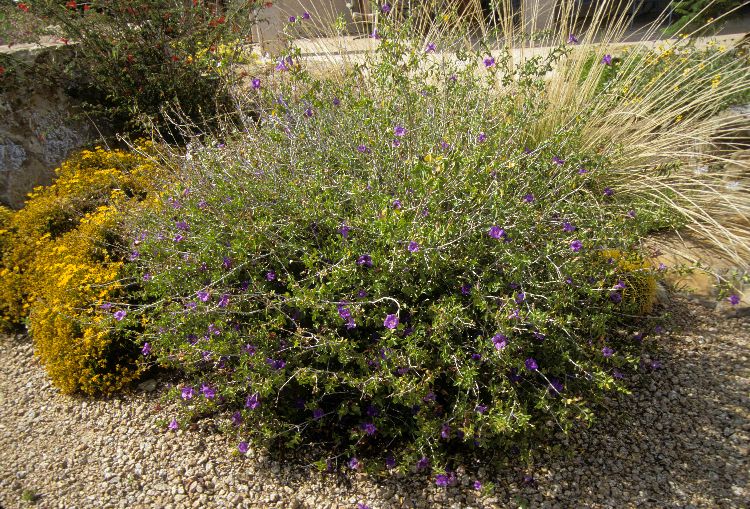
Ruellia peninsularis
Baja Ruellia
Ruellia is a small shrub with a rounded form. Flowers are an attractive shade of purple. Accepts some shade. Canopy coverage: 13 square feet.
[Read More]Russelia equisetiformis
Firecracker Plant, Coral Fountain
Firecracker Plant grows in a sprawling form. Long branches are covered in tubular, coral-red flowers during the warm season. Excellent in planters or containers when branches can drape and trail. Cold-tender, so locate in protected location. Also best with some protection from the sun in hot summer regions. Canopy coverage: 28 square feet.
[Read More]Salvia azurea var. grandiflora
Prairie Sage, Pitcher Sage
Prairie Sage, also known as Pitcher Sage, is a shrubby perennial with sky blue flowers. It is a tough plant that accepts about any well drained soil. In its native habitat it competes with prairie grasses. Cut back in midsummer to develop multi-branching plants that produce more flowers. Canopy coverage: 7 square feet.
[Read More]Salvia clevelandii
Chaparral Sage
A California chaparral native that performs well in desert regions. Foliage has a pleasant, distinctive fragrance when brushed or following rain. Canopy coverage: 20 square feet.
[Read More]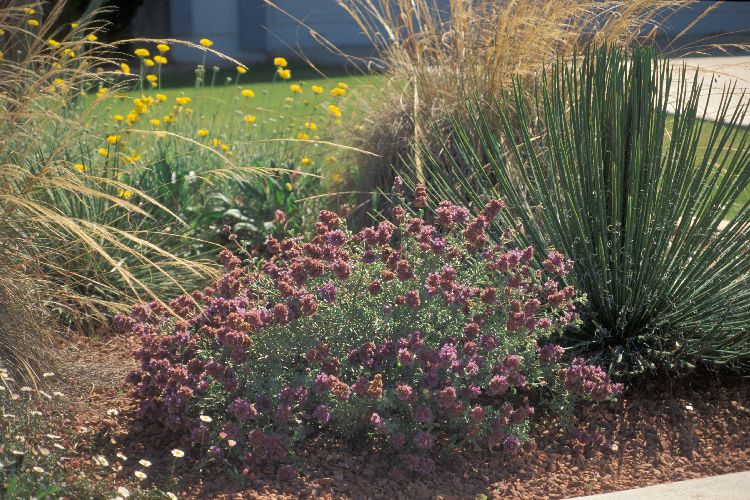
Salvia dorrii var. dorrii
Mojave Desert Sage
Informal growth habit combines well with native subshrubs and perennials in a naturalistic setting. Foliage is aromatic. Canopy coverage: 3 square feet. Photo courtesy Mountain States Wholesale Nursery.
[Read More]Salvia greggii
Autumn Sage
Autumn Sage is a small-scale shrub called a subshrub. It is one of the more forgiving flowering plants for desert regions. Best with some afternoon shade. Many selections are available in a range of flower colors. Canopy coverage: 7 square feet.
[Read More]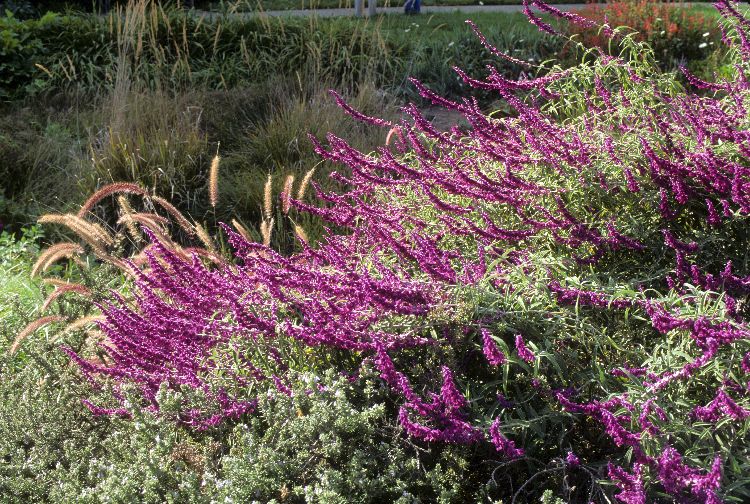
Salvia leucantha
Mexican Bush Sage
The mounding growth habit of Mexican Bush Sage is best in a casual, naturalistic setting. Provide with afternoon shade. Flowers are striking, velvety purple spikes that rise above the foliage. Canopy coverage: 13 square feet.
[Read More]